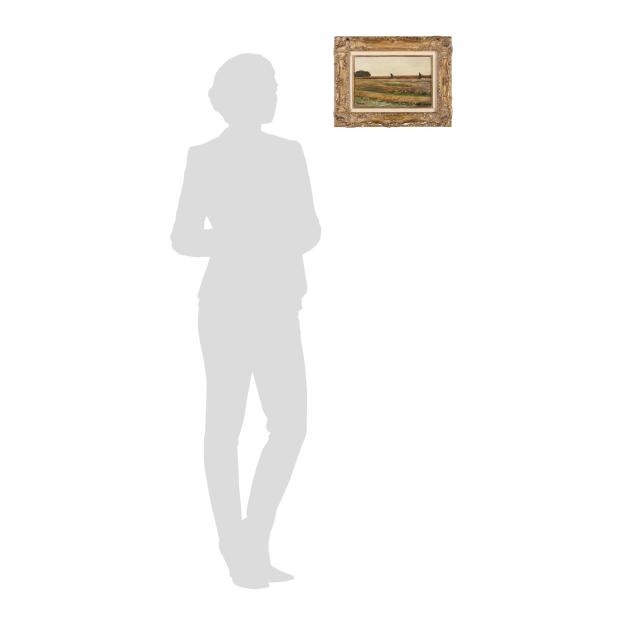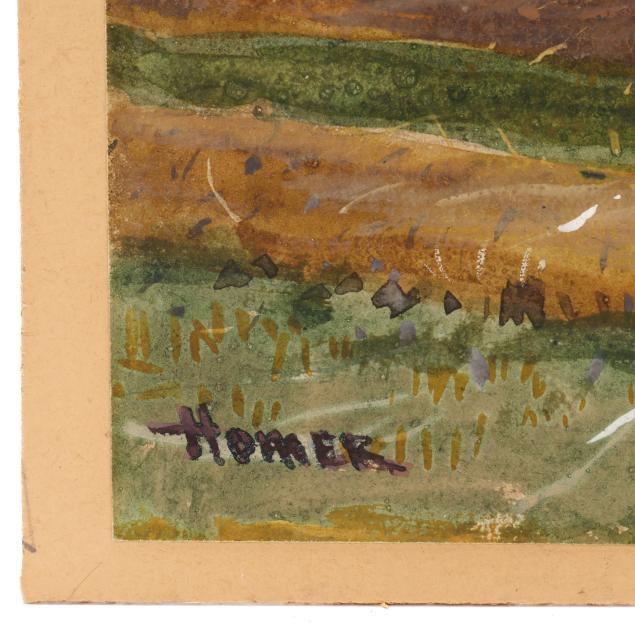
Lot 4046
Winslow Homer (American, 1836-1910), The Reapers
Lot Details & Additional Photographs
An inscription affixed to the verso reads:
In 1880, some Winslow Homers were sold with other paintings at Sullivan Bros. & Libbie’s Auction Room then at 3 Beacon St. Mr. Libbie bought this himself - I followed with a sale of my own pictures on my return from Europe & Mr. Libbie liked one of mine so much that we made the exchange.
Hendricks A. Hallett
Sheet size 6 1/4 x 9 1/2 in.; Frame dimensions 11 x 14 in.
The Collection of the late Frances Stagg Nicholson Sanders, Raleigh, North Carolina
(Sullivan Bros. & Libbie, Boston, unidentified auction, 1880)
Charles F. Libbie, Boston, 1880
Hendricks A. Hallet, Boston, nd
Estate of Hendricks A. Hallett, 1921 (?)
J. Robertson Duff, Westwood, Massachusetts, circa 1930
(Vose Galleries of Boston, 1954)
Dr. George H. A. Clowes, Indianapolis, Indiana, circa 1954
Estate of Dr. Clowes, circa 1959
(Newhouse Galleries, New York, 1959)
Published:
Lloyd Goodrich & Abigail Booth Gerdts, Record of Works by Winslow Homer: 1867-1876, vol. II, New York 2008, no. 319, p. 65, illustrated
Winslow Homer revolutionized the medium of watercolor, using it not only as a tool for study but as a standalone form of artistic expression. Homer began working seriously in watercolor in the early 1870s, during a time when the medium was often considered secondary to oil painting. However, he elevated it to new heights, creating vibrant, luminous works that showcased his mastery of light, color, and composition. His watercolors often depicted scenes of everyday life, maritime activities, and the natural world, drawing inspiration from his travels to the Caribbean, England, and the coast of Maine. Through a combination of loose, fluid washes and precise detail, Homer captured the ephemeral beauty of his subjects, whether it was the sparkling transparency of water, the glow of sunlight, or the dynamic motion of waves and figures.
At first sight, the original watercolor offered here calls to mind Homer’s masterpiece, The Veteran in a New Field, completed in 1865 and now in the collection of the Metropolitan Museum of Art. Lloyd Goodrich initially examined this work in 1954 and believed the painting may have been completed during Homer’s year-long stay in France in 1867. Abigail Booth Gerdts called into question this early date, as Homer was not known to work in watercolors until the early 1870s. She believes the style relates to his watercolors of the summer of 1874 and may depict a Long Island, New York setting.
Winslow Homer’s affinity for hay fields stemmed from his deep appreciation for the pastoral landscapes of rural America and their connection to themes of labor, tranquility, and natural beauty. Homer frequently depicted hay fields in his works, particularly during his time in the Adirondacks and New England. These scenes often featured farmers and laborers at work, capturing the rhythms of rural life with a sense of authenticity and respect. For Homer, hay fields symbolized the harmony between humans and nature, as well as the cyclical processes of life and the changing seasons.
Some toning to paper; unknown adhesive affixing paper to cardboard backing.














